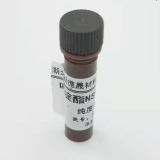- Category :
Other Chemicals
- CAS NO :
- EC NO :
- Molecular Formula :
- Main Specifications : yellow powder.
- Synonyms :
Package: 10g/bottle
Uses : Chemiluminescence reagent
Product description:
As a reagent that can be used as a chemiluminescent marker, acridine hydrazide NSP-SA-ADH has been proven to have much higher stability, labeling specificity, and detection sensitivity than other luminescent reagents. At the same time, due to its advantages such as mild reaction conditions, rapid luminescence efficiency, and high luminescence intensity, it is widely used in environmental monitoring, biological and drug analysis, and has also played a unique role in the diagnosis of many large diseases.
NSP-SA-ADH is a yellow powder with a purity of over 98% and a molecular weight of 740.85. It is commonly packaged in brown bottles and stored at low temperatures away from light. It is suitable for labeling antigen antibody proteins. Although similar to other acridine series products and with acridine rings, the detection substances are different, and the role played by acridine hydrazide cannot be underestimated.
Advantages of acridine hydrazide NSP-SA-ADH
1. The labeling rate is high, as it contains free amino groups, making it suitable for direct coupling with polysaccharides, nucleic acids, or proteins containing aldehyde groups.
2. It has hydrolysis resistance and stability, and the hydrolysis resistance of acridine hydrazide is generally stronger than other acridine compounds. In addition, even in acidic solutions, its performance is very stable. When stored at room temperature for 4 weeks, its photoquantum yield does not decrease, and even at -20 ℃, it can be stored for more than a year.
3. It has hydrophilicity. As the produced acridine hydrazide is in powder form, it will be prepared into a solution when used, and it is required to be soluble in water, so that it can be water-soluble with markers such as antibodies and nucleic acids, making it easy for later luminescence detection.
 CN ChemNet > Gold Suppliers > Hubei new DE sheng material science and technology co., LTD. >
CN ChemNet > Gold Suppliers > Hubei new DE sheng material science and technology co., LTD. > 